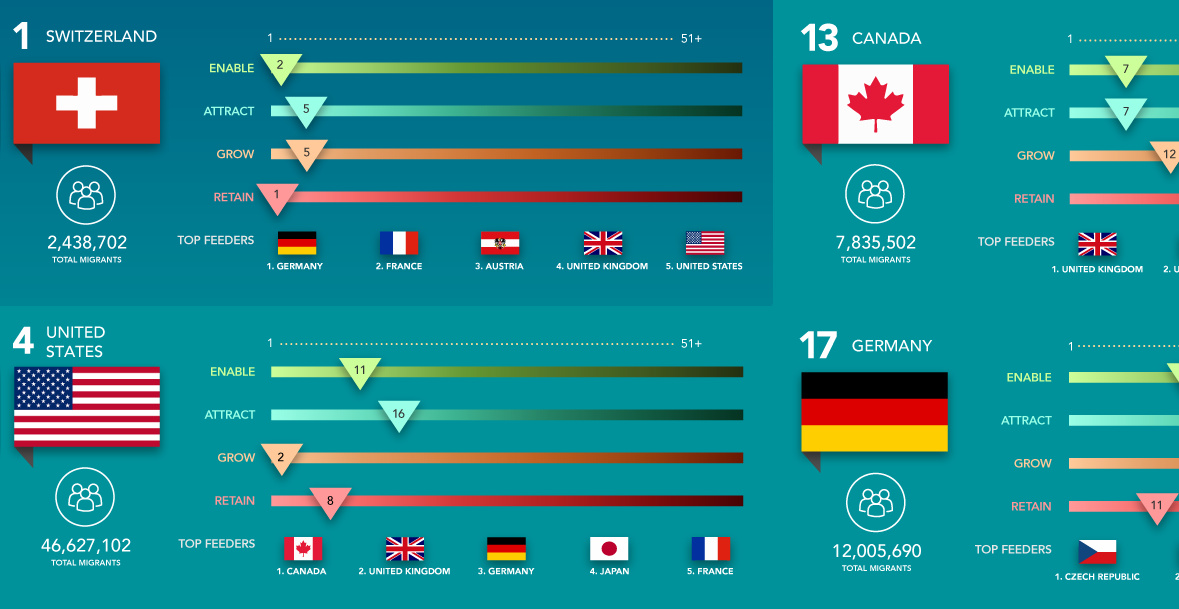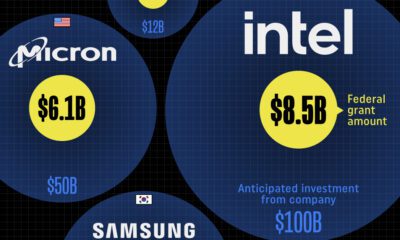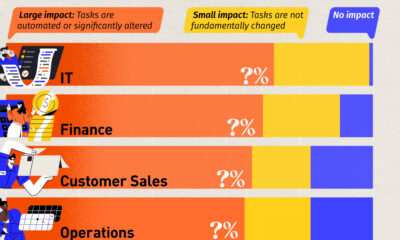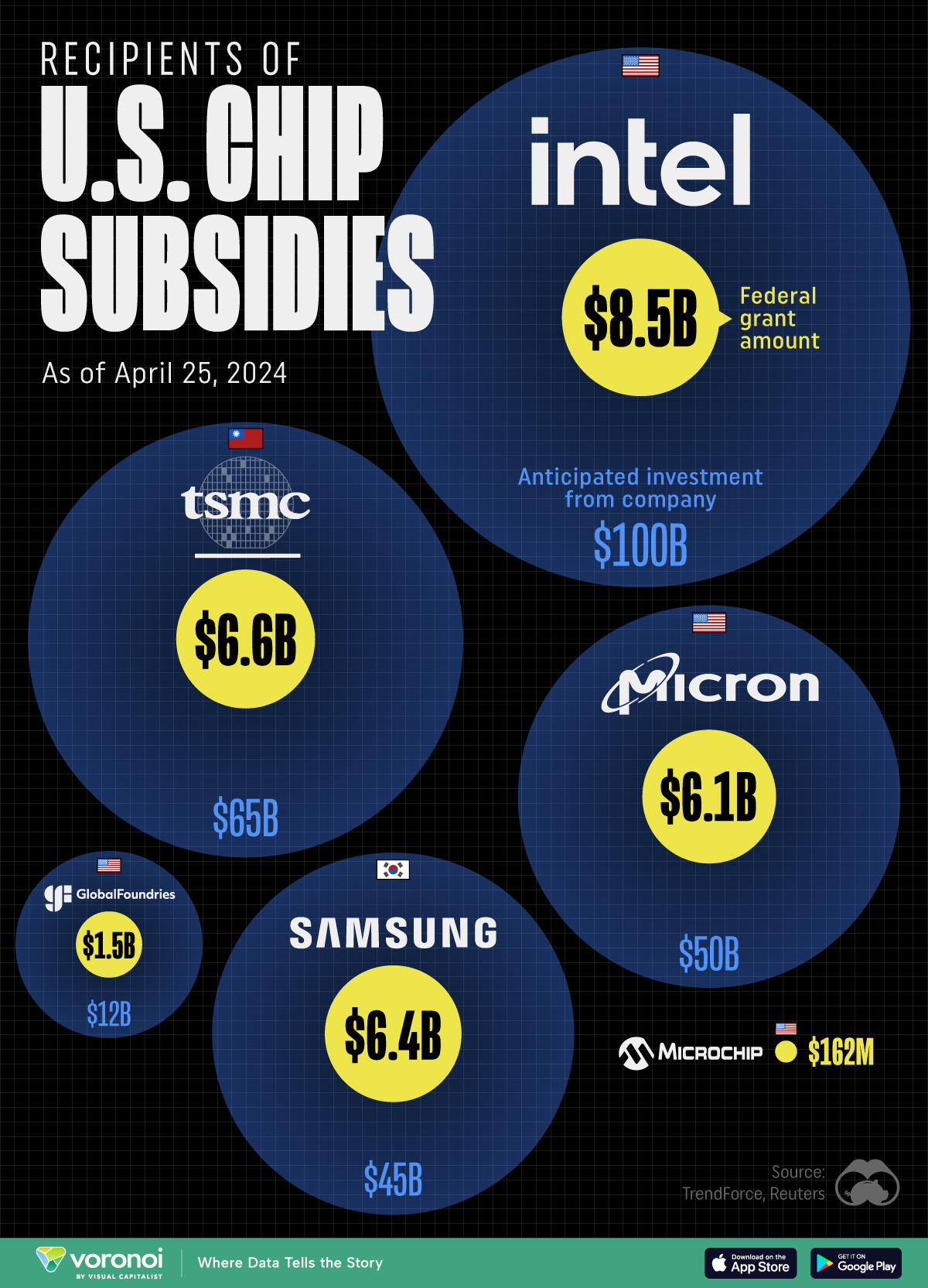Technology
Which Countries Are Set to Attract the Highest Skilled Workers from Abroad?
For the world’s most innovative companies, the stated goal of attracting top talent is not simply an HR mantra – it’s a matter of survival.
Whether we’re talking about a giant like Google that is constantly searching to add world-class engineers or we’re talking about a startup that needs a visionary to shape products of the future, innovative companies require access to high-skilled workers to stay ahead of their competition.
The Global Search for Talent
There’s no doubt that top companies will go out of their way to bring in highly-skilled workers, even if they must look internationally to find the best of the best.
However, part of this recruitment process is not necessarily under their control. The reality is that countries themselves have different policies that affect how easy it is to attract people, educate and develop them, and retain the best workers – and these factors can either empower or undermine talent recruitment efforts.
Today’s infographic comes from KDM Engineering, and it breaks down the top 25 countries in attracting high-skilled workers.

If attracting the best people isn’t hard enough, there is another factor that can complicate things: the best people are sometimes not found locally or even nationally.
For top companies, recruitment is a global game – and it’s partially driven by the policies of governments as well as the quality of life within their countries’ borders.
Top Countries for Attracting High-Skilled Workers
Using data from the United Nations and the Global Talent Competitive Index, here are the top 10 countries that are the best at attracting and retaining highly-skilled workers.
They are ordered by overall rank, but their sub-category ranks are also displayed:
| Overall Rank | Country | Enable | Attract | Grow | Retain | Migrants |
|---|---|---|---|---|---|---|
| #1 | 🇨🇭 Switzerland | #2 | #5 | #5 | #1 | 2,438,702 |
| #2 | 🇸🇬 Singapore | #1 | #1 | #13 | #7 | 2,543,638 |
| #3 | 🇬🇧 United Kingdom | #8 | #11 | #7 | #5 | 8,543,120 |
| #4 | 🇺🇸 United States | #11 | #16 | #2 | #8 | 46,627,102 |
| #5 | 🇸🇪 Sweden | #9 | #13 | #8 | #4 | 1,639,771 |
| #6 | 🇦🇺 Australia | #17 | #6 | #9 | #14 | 6,763,663 |
| #7 | 🇱🇺 Luxembourg | #21 | #2 | #17 | #3 | 249,325 |
| #8 | 🇩🇰 Denmark | #3 | #15 | #3 | #15 | 572,520 |
| #9 | 🇫🇮 Finland | #6 | #21 | #4 | #9 | 315,881 |
| #10 | 🇳🇴 Norway | #13 | #14 | #10 | #2 | 741,813 |
The subcategory ranks are defined as follows:
- Enable: Status of regulatory and market landscapes in country
- Attract: Ability to attract companies and people with needed competencies
- Grow: Ability to offer high-quality education, apprenticeships, and training
- Retain: Indicates quality of life in country
According to the data, Switzerland (#1) and Singapore (#2) are the two best countries for attaining and keeping high-skilled workers.
While the regulatory environments in both of these countries are well-known by reputation, perhaps what’s more surprising is that Singapore scores the #1 rank in the “Attract” subcategory, while Switzerland is the #1 country for retaining talent based on quality of life.
Another data point that stands out?
The United States has a higher total migrant population (46.6 million) than all of the countries on the top 10 list combined. Not surprisingly, the massive U.S. economy also has a high ranking in the “Grow” category, which represents available opportunities to bring high-skilled workers to the next level through education and training.
Technology
All of the Grants Given by the U.S. CHIPS Act
Intel, TSMC, and more have received billions in subsidies from the U.S. CHIPS Act in 2024.
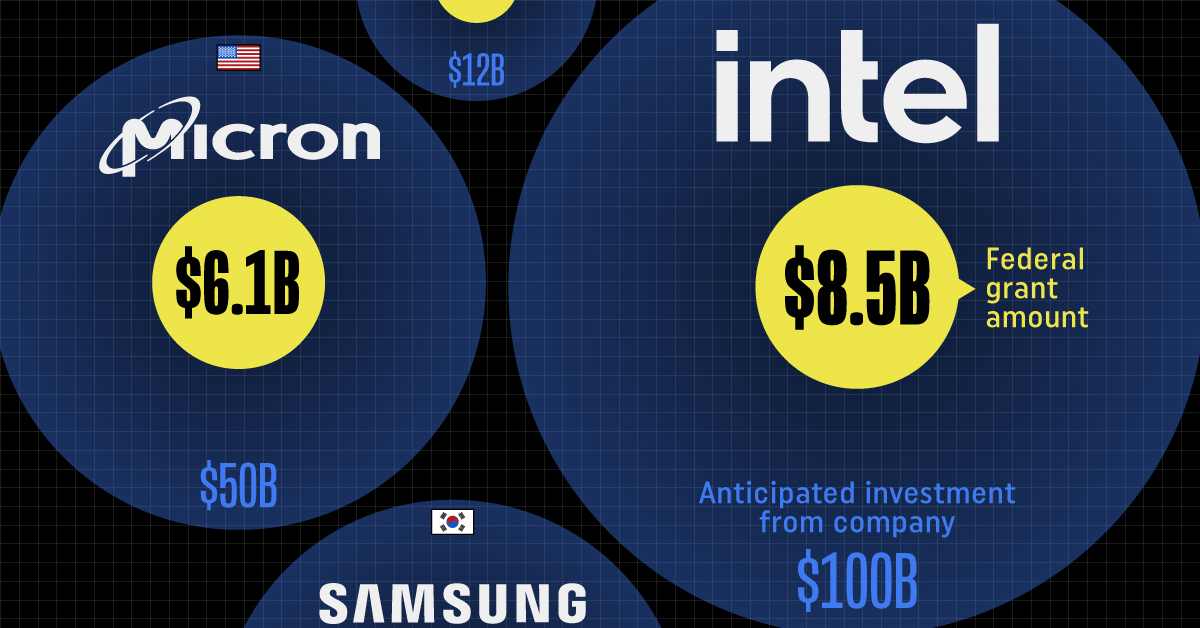
All of the Grants Given by the U.S. CHIPS Act
This was originally posted on our Voronoi app. Download the app for free on iOS or Android and discover incredible data-driven charts from a variety of trusted sources.
This visualization shows which companies are receiving grants from the U.S. CHIPS Act, as of April 25, 2024. The CHIPS Act is a federal statute signed into law by President Joe Biden that authorizes $280 billion in new funding to boost domestic research and manufacturing of semiconductors.
The grant amounts visualized in this graphic are intended to accelerate the production of semiconductor fabrication plants (fabs) across the United States.
Data and Company Highlights
The figures we used to create this graphic were collected from a variety of public news sources. The Semiconductor Industry Association (SIA) also maintains a tracker for CHIPS Act recipients, though at the time of writing it does not have the latest details for Micron.
| Company | Federal Grant Amount | Anticipated Investment From Company |
|---|---|---|
| 🇺🇸 Intel | $8,500,000,000 | $100,000,000,000 |
| 🇹🇼 TSMC | $6,600,000,000 | $65,000,000,000 |
| 🇰🇷 Samsung | $6,400,000,000 | $45,000,000,000 |
| 🇺🇸 Micron | $6,100,000,000 | $50,000,000,000 |
| 🇺🇸 GlobalFoundries | $1,500,000,000 | $12,000,000,000 |
| 🇺🇸 Microchip | $162,000,000 | N/A |
| 🇬🇧 BAE Systems | $35,000,000 | N/A |
BAE Systems was not included in the graphic due to size limitations
Intel’s Massive Plans
Intel is receiving the largest share of the pie, with $8.5 billion in grants (plus an additional $11 billion in government loans). This grant accounts for 22% of the CHIPS Act’s total subsidies for chip production.
From Intel’s side, the company is expected to invest $100 billion to construct new fabs in Arizona and Ohio, while modernizing and/or expanding existing fabs in Oregon and New Mexico. Intel could also claim another $25 billion in credits through the U.S. Treasury Department’s Investment Tax Credit.
TSMC Expands its U.S. Presence
TSMC, the world’s largest semiconductor foundry company, is receiving a hefty $6.6 billion to construct a new chip plant with three fabs in Arizona. The Taiwanese chipmaker is expected to invest $65 billion into the project.
The plant’s first fab will be up and running in the first half of 2025, leveraging 4 nm (nanometer) technology. According to TrendForce, the other fabs will produce chips on more advanced 3 nm and 2 nm processes.
The Latest Grant Goes to Micron
Micron, the only U.S.-based manufacturer of memory chips, is set to receive $6.1 billion in grants to support its plans of investing $50 billion through 2030. This investment will be used to construct new fabs in Idaho and New York.
-

 Debt1 week ago
Debt1 week agoHow Debt-to-GDP Ratios Have Changed Since 2000
-

 Countries2 weeks ago
Countries2 weeks agoPopulation Projections: The World’s 6 Largest Countries in 2075
-

 Markets2 weeks ago
Markets2 weeks agoThe Top 10 States by Real GDP Growth in 2023
-

 Demographics2 weeks ago
Demographics2 weeks agoThe Smallest Gender Wage Gaps in OECD Countries
-

 United States2 weeks ago
United States2 weeks agoWhere U.S. Inflation Hit the Hardest in March 2024
-

 Green2 weeks ago
Green2 weeks agoTop Countries By Forest Growth Since 2001
-

 United States2 weeks ago
United States2 weeks agoRanked: The Largest U.S. Corporations by Number of Employees
-

 Maps2 weeks ago
Maps2 weeks agoThe Largest Earthquakes in the New York Area (1970-2024)

